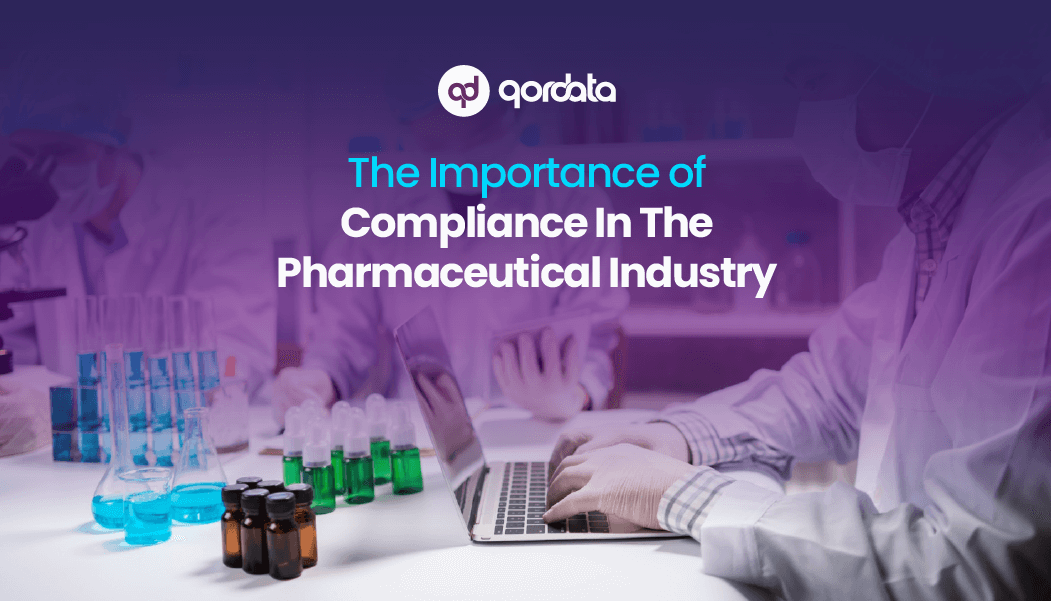Table of Contents
Toggle“48% of compliance teams are turning to big data and analytics to strengthen their compliance function.”
(Source: Compliance Risk Study – 2022 | Accenture)
Data forms the foundation of every successful compliance program. This fundamental concept is straightforward: Companies develop success metrics backed by data to assess the effectiveness of their compliance efforts. Life sciences companies’ commercial compliance data can be audited to ensure adherence to internal controls and ethical practices.
Recent technological advancements have enabled companies to adopt a more comprehensive approach to compliance risks, including fraud and corruption, making one-dimensional data sets insufficient. It has become increasingly important for companies to integrate contextual analytics into their compliance programs to maximize their effectiveness.
How can contextual analytics enhance a corporate compliance program in practice? What should compliance professionals consider when integrating contextual analytics into their organization’s programs? This article will address these questions. But first, let’s define what contextual analytics means in the context of compliance programs.
What is Contextual Analytics?
Contextual analytics is a practical technique that involves layering multiple data sets to identify patterns and risks that might otherwise be missed. In the context of commercial compliance, this could involve analyzing data from various sources, such as:
- Global Compliance Monitoring
- CMS Open Payments Reporting
- Expense Monitoring and Auditing
- Global HCP Engagement
- Compliance Insights
- Grants, and sponsorships
By layering this data, compliance officers can gain a more holistic view of their organization’s risk profile.
Why is Contextual Analytics Important for Life Sciences Compliance?
Regulatory Adherence
The life sciences industry is heavily regulated, with strict guidelines from agencies like the FDA, CMS, and OIG. Contextual analytics helps ensure that all promotional activities, interactions with healthcare professionals (HCPs), and sales practices comply with these regulations by continuously monitoring and analyzing data within the context of relevant laws and guidelines.
Risk Mitigation
Contextual analytics enables companies to proactively address issues before they escalate by providing insights into potential compliance risks. This includes identifying behavior patterns that might indicate off-label promotion, improper payments, or other non-compliant activities.
Enhanced Decision-Making
Contextual analytics provides a comprehensive view of data, allowing for more informed decision-making. For instance, sales and marketing teams can tailor their strategies to ensure they align with compliance requirements, thereby reducing the risk of regulatory violations.
Improved Transparency
The ability to analyze data in context helps create transparency in interactions between life sciences companies and HCPs. This is essential for maintaining regulatory and stakeholder trust and avoiding potential conflicts of interest that could lead to compliance breaches.
Efficient Reporting
Regulatory bodies often require detailed reports on various commercial activities. Contextual analytics streamlines the reporting process by automating the collection, analysis, and presentation of relevant data, ensuring that reports are accurate and timely.
Data Integration
Life sciences companies generate vast amounts of data from various sources, including third-party interaction, promotional and sales activities. Contextual analytics integrates this data to provide a macro perspective, ensuring compliance efforts are based on comprehensive and accurate information.
Monitoring and Auditing
Continuous monitoring and periodic auditing are essential for maintaining compliance. Contextual analytics facilitates these processes by providing actionable insights and historical data analysis, making identifying and rectifying non-compliance issues easier.
Training and Education
Insights gained from contextual analytics can be used to develop targeted employee training programs. By understanding common compliance challenges and violations, companies can more effectively educate their team on avoiding these pitfalls.
Competitive Advantage
Companies that leverage contextual analytics for compliance not only avoid fines and legal issues but also gain a competitive edge by building a reputation for integrity and trustworthiness. This can be crucial in securing partnerships and customer loyalty.
Considerations for Implementing a Data-driven Compliance Platform
While contextual analytics offers a number of benefits, there are also some considerations that organizations need to take into account when implementing a data-driven compliance program. Here are a few of the most important:
- Data Quality: A data-driven compliance program’s success hinges on the data’s quality. Organizations must ensure that their data is accurate, complete, and consistent.
- Data Accessibility: Compliance officers need easy access to the data they need to do their jobs. This means that organizations must invest in data governance and management tools.
- User Experience: When implementing a data-driven compliance program, the user experience must be considered. The system should be easy for compliance officers to use and understand.
Leveraging Data Analytics to Comply with Regulatory Demands
Regulatory authorities, such as the U.S. Department of Justice (DOJ), pose three pivotal questions when assessing corporate compliance programs.
Firstly, they seek to determine if the compliance program is well-designed. Secondly, they evaluate whether the program is adequately resourced and capable of functioning effectively.
Lastly, they examine if the compliance program is working in practice. Utilizing data analytics can significantly help companies meet these stringent expectations.
Prosecutors demand concrete evidence to support claims, favoring data over presumptions and opinions. Companies can provide the most objective and verifiable evidence by integrating data analytics into compliance programs.
The DOJ emphasizes the importance of risk management processes and risk-tailored resource allocation when assessing compliance programs. Data analytics enhances these processes and offers powerful insights, revealing patterns and trends that might otherwise go unnoticed.
Through data analytics, compliance teams gain objective evidence and assessments of their company’s risks, including those posed by third parties. This demonstrates to prosecutors that the company is committed to evidence-based risk detection and proactive wrongdoing detection.
Moreover, the DOJ expects companies to leverage data analytics to show that compliance resourcing is proportionate to the risks inherent in the company’s business profile.
Compliance organizations employing data analytics to independently test their financial transactions for non-compliance—ideally on a global scale and in real-time—gain the clearest picture of their program’s operational effectiveness.
This approach provides a data-driven perspective rather than relying on hearsay, ensuring robust and effective compliance practices.
Increase the Effectiveness of your compliance program with qordata
qordata’s Data-Driven Compliance Platform (DDCP) is a powerful tool that can help organizations implement a data-driven approach to compliance. DDCP leverages artificial intelligence such as Computer Vision, OCR, Machine Learning, Data Sciences, and Generative AI to solve life sciences compliance challenges through technology.
It is a global platform that enables life sciences compliance teams to get a holistic view of all the risks across the organization. It offers coverage of the seven elements of an effective compliance program while adapting seamlessly to your existing processes.
Conclusion
In conclusion, contextual analytics offers a transformative approach to enhancing compliance programs within the life sciences industry. By integrating data from various sources, organizations can gain a comprehensive view of their compliance landscape, enabling them to identify and address potential risks proactively. This approach ensures adherence to regulatory standards and enhances decision-making, transparency, and reporting efficiency.
Furthermore, leveraging advanced technologies such as artificial intelligence and machine learning can significantly improve the effectiveness of compliance efforts. Companies that adopt these data-driven strategies can build a reputation for integrity and trustworthiness, securing a competitive edge in the industry.
Other Relevant Read:



